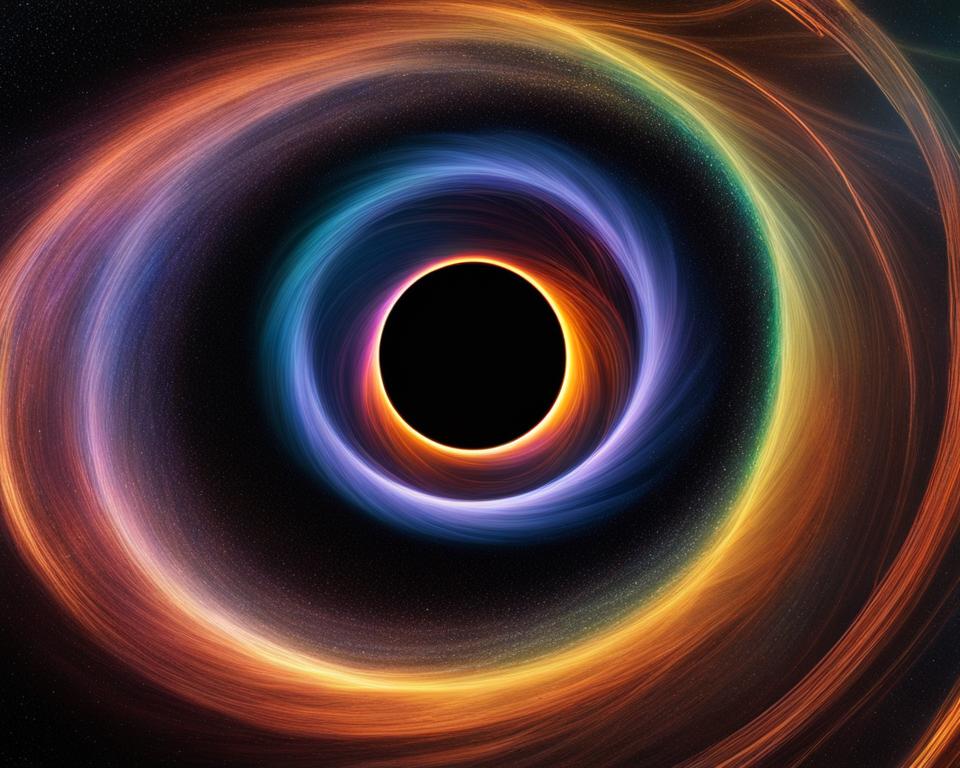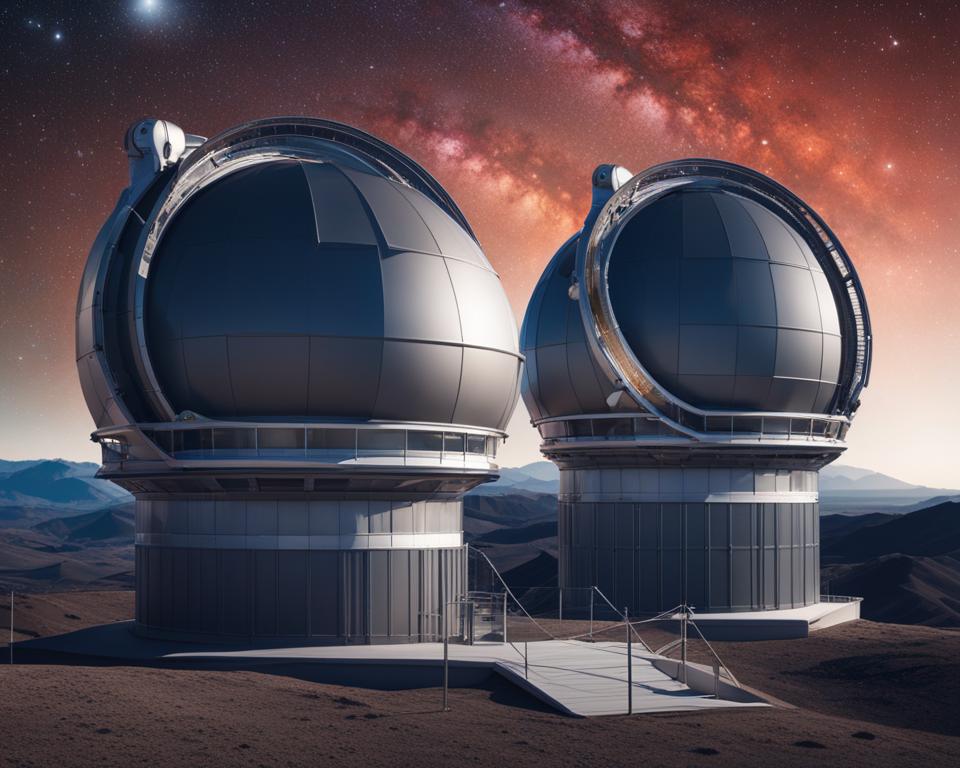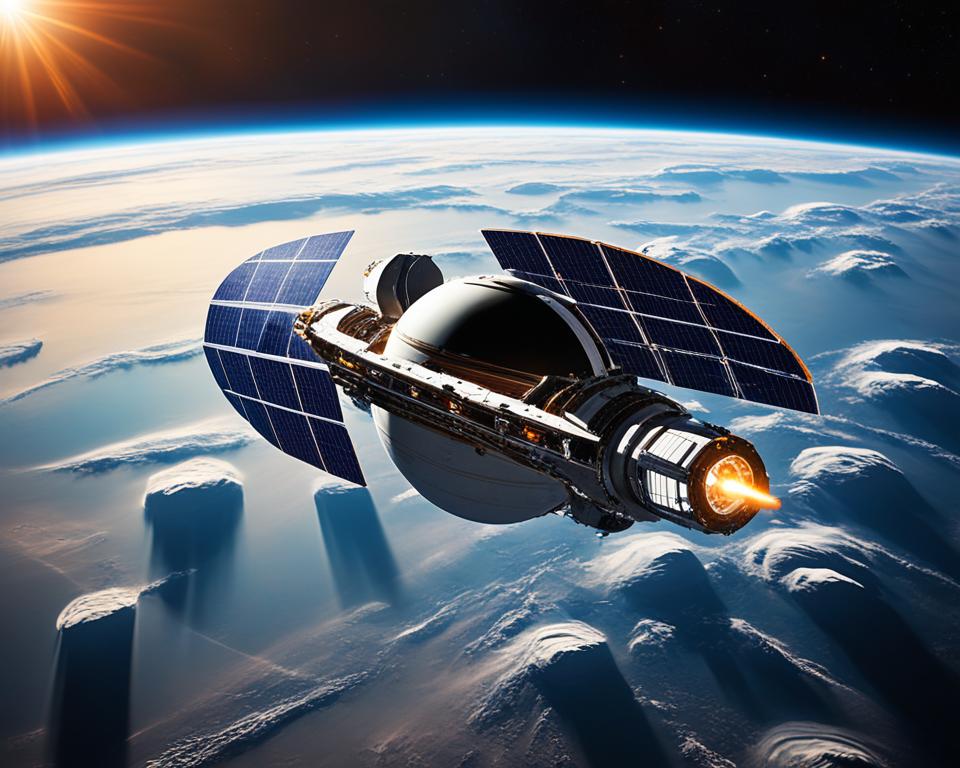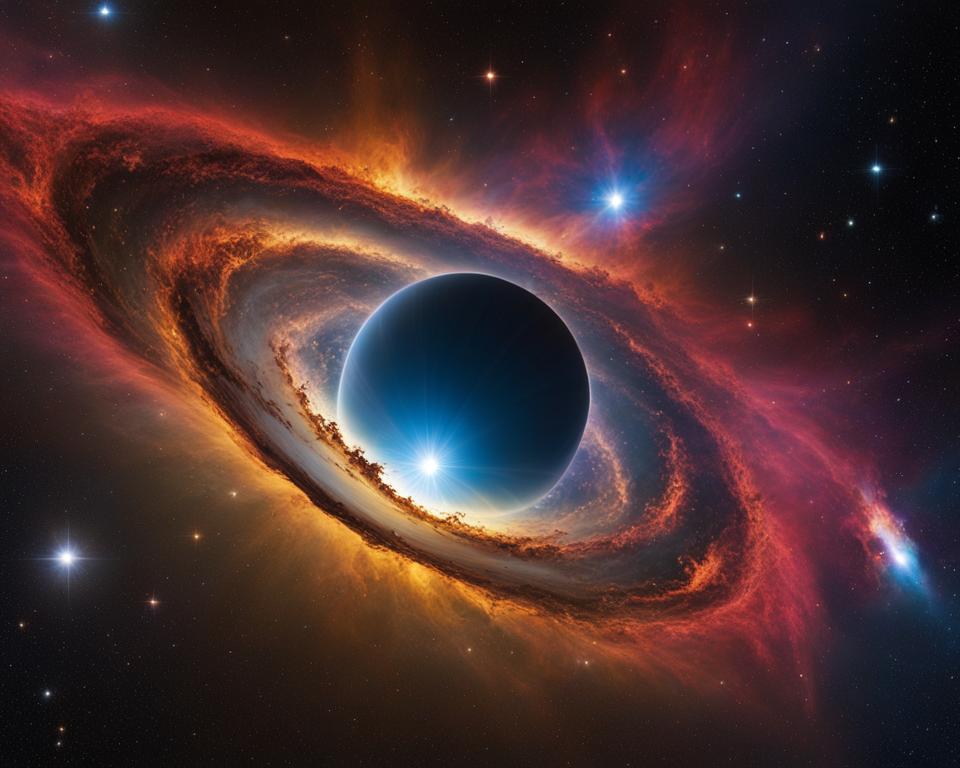Adverts
Over the past 62 years, space science has made great strides in exploring the universe. From the first manned flight into space by the Russian cosmonaut Yuri Gagarin, to current missions that aim to explore the Moon, Mars and beyond, humanity has achieved incredible feats. Explore the main ones now achievements of space science and how they are shaping our future.
Adverts
Main points
- Space science has advanced rapidly, exploring the universe and beyond.
- To the manned space travel represent important milestones in the history of space exploration.
- The exploration of the Moon and Mars paves the way for space colonization.
- Missions like Artemis and Juice seek new discoveries and the search for extraterrestrial life.
- O James Webb telescope it's the first photo of a black hole revolutionized our spatial knowledge.
The First Space Flight and Lunar Exploration
On April 12, 1961, Yuri Gagarin became the first man to go into space, making a complete revolution around the Earth's orbit. This milestone paved the way for Apollo missions, which led astronauts Neil Armstrong, Michael Collins and Edwin Aldrin Jr. to set foot on the Moon on July 20, 1969. In total, there were six Apollo missions which allowed twelve astronauts to walk on the lunar surface.
Yuri Gagarin's courage and the space age
Yuri Gagarin was a pioneer in space. With his historic voyage aboard Vostok 1, he not only began a new era in space exploration, but also inspired future generations of astronauts and scientists.
Adverts
The Apollo mission, in turn, marked a historic moment in lunar exploration. A first expedition to the Moon allowed humanity to take its first steps on a celestial body beyond Earth.
“One small step for man, one giant leap for humanity.” – Neil Armstrong
The Apollo missions and their impact on science
Throughout the Apollo missions, astronauts performed scientific experiments, collected lunar samples, and contributed significantly to our understanding of space.
A first expedition to the Moon not only expanded our knowledge about Earth's natural satellite, but also brought technological advances, which were later applied to other areas of science and everyday life.
An achievement for all humanity
The first manned space flight and the lunar exploration They are milestones that demonstrate humanity's ability to overcome challenges and achieve the impossible. These achievements represent the incredible dedication and perseverance of the scientists, engineers and astronauts involved in these missions.
These iconic feats of space history continue to inspire and motivate the search for new discoveries and explorations beyond Earth.
See too:
The New Space Age: Artemis and the Return to the Moon
A Artemis mission, led by NASA, aims to return to the Moon and establish a permanent human presence. The first phase of the mission, called Artemis I, has already been launched in November 2022, and is being considered as preparation for future missions Artemis II It is Artemis III, which foresee manned expeditions to the lunar surface. In addition to exploring the Moon, NASA seeks to study the lunar water ice, which can be used as a resource for space colonization.
With the return to the Moon, the Artemis mission seeks to advance the frontiers of lunar exploration and establish a sustainable presence on Earth's natural satellite. Artemis I, which took place in 2022, marked the beginning of this new space era, being the first unmanned mission of the Artemis program. It aimed to test the spacecraft's systems and demonstrate the capabilities that will be needed for future manned missions.
| Mission | Date | goal |
|---|---|---|
| Artemis I | November 2022 | Test spacecraft systems |
| Artemis II | Not yet released | Taking astronauts beyond the Moon's orbit |
| Artemis III | Not yet released | Landing astronauts on the lunar surface |
One of the main reasons for the interest in exploring the Moon is the lunar water ice. Studies suggest that water ice exists in permanently shadowed craters at the lunar poles, which could be a valuable source of drinking water and fuel for future space missions. Furthermore, water ice could also be split into hydrogen and oxygen, making it an essential resource for lunar colonization and life support for astronauts.
A Artemis mission represents an important step towards lunar exploration and humanity's advancement in space. In addition to boosting technology and space science, returning to the Moon will open doors for future longer trips, such as Mars exploration. With ambitious goals and an audacious vision, the Artemis mission promises to mark the history of space exploration and inspire future generations to reach for the stars.
The Search for Life in Space: Mission Juice
A Juice mission is a European Space Agency collaboration that aims to explore Jupiter's icy moons, including Ganymede and Europa, for signs of extraterrestrial life. Using an array of advanced scientific instruments, the Juice probe will analyze the atmosphere and composition of these moons to determine whether conditions suitable for life exist. This mission represents an important milestone in the space exploration and paves the way for fascinating new discoveries.
Jupiter, the largest planet in our solar system, is home to several moons that arouse the interest of scientists due to the possibility that they contain underground oceans and environments conducive to life. Ganymede, for example, is the largest moon in the solar system and has a layer of ice that covers a salty ocean. Europa has one of the deepest oceans in the solar system, also protected by a layer of ice. A Juice Mission will investigate these celestial bodies in search of answers about the existence of life beyond Earth.
Exploring Jupiter's Moons: Ganymede and Europa
The moons Ganymede and Europa are targets of great scientific interest due to their unique characteristics. Ganymede is the only known natural satellite that has its own magnetic field, which indicates the presence of a subsurface salty ocean. Its surface is full of craters, canyons and interesting geological formations. Europa has an icy crust with evidence of recent geological processes, such as fissures and tectonic plates. It is believed that the interaction between the subsurface ocean and the icy surface could provide conditions conducive to life.
"A Juice mission will allow us to explore these moons in a way never before possible. We are excited about the possibility of finding evidence of extraterrestrial life and expand our knowledge of the mysteries of the universe.” – Scientist at the European Space Agency
The Juice probe will be equipped with high-resolution cameras, spectrometers and other scientific instruments capable of analyzing the mineral composition of the moons, mapping their surface and studying the interaction between the subsurface ocean and the ice crust. This information will be essential to determine whether there are conditions suitable for life on these distant moons.
The Juice mission represents a significant step forward in the field of space exploration and in the search for life beyond Earth. By better understanding the Jupiter's moons, we will be closer to unlocking the secrets of the universe and answering the eternal question: are we alone in space?
The Journey to Mars
Mars has been the target of several space missions, including NASA's recent Perseverance mission, China's Tianwen-1 probe, and the United Arab Emirates' Hope probe. A Mars exploration has aroused the interest of humanity due to the possibility of martian colonization and the search for evidence of extraterrestrial life.
NASA's goal is to send humans to the red planet, which will represent a historic milestone in space exploration. The Artemis lunar missions are considered a preparation for this grand undertaking, which presents several challenges to be overcome.
One of the main challenges faced on the trip to Mars is space radiation, which can affect the health of astronauts during the long journey. Furthermore, microgravity and adaptation to the Martian environment are also obstacles to be considered.
| Challenges of Traveling to Mars |
|---|
| Space Radiation |
| Microgravity |
| Adaptation to the Martian Environment |
Space radiation is one of the main concerns for astronauts traveling to Mars. During the mission, they will be exposed to high levels of cosmic radiation, which can cause damage to cells in the human body and increase the risk of developing diseases such as cancer.
Microgravity is another challenge astronauts will face. The absence of gravity or lower gravity on Mars can affect the normal functioning of the human body, resulting in loss of bone and muscle mass, changes in vision and cardiovascular problems.
Adapting to the Martian environment is also a complex challenge. The surface of Mars is hostile, with extreme temperatures, low atmospheric pressure and the presence of fine dust. Astronauts will need suitable spacesuits and efficient life support systems to ensure their safety and survival on the planet.
Despite the challenges, the Mars exploration continues to advance. To the space missions Current studies are providing valuable data about the Red Planet and setting the stage for future manned expeditions. The dream of colonizing Mars and establishing a permanent human presence is becoming closer to reality.
The journey to Mars represents an audacious step for humanity, with implications that go beyond science. Space exploration challenges us to expand our limits, seek new horizons and answer fundamental questions about our existence. As we continue on this journey, the enthusiasm and determination to unravel the mysteries of Mars and conquer new territories in the cosmos remains.
Science Advances with the James Webb Telescope
The James Webb Space Telescope, launched in December 2021, has provided significant advances in space observation. His first images revealed nebulae, distant galaxies, Neptune's rings and other celestial objects. The James Webb is considered the largest telescope in operation and is contributing to scientific progress in the field of astronomy.
O James Webb telescope it was designed to surpass the capabilities of its predecessor, the Hubble telescope. With a 6.5 meter diameter primary mirror, James Webb allows the observation of celestial objects at higher resolution and at wavelengths beyond the visible spectrum.
One of the main features that makes James Webb so powerful is its ability to capture infrared light from the universe. This allows the telescope to observe objects and phenomena that are distant and hidden in clouds of interstellar dust.
In addition, James Webb has advanced instruments that allow it to study the chemical composition of distant planets, search for signs of atmospheres and even investigate the possibility of life on other worlds.
As James Webb telescope, we are facing a new era of space discoveries. His spectacular images and the scientific data he collects are boosting our understanding of the universe and showing us a cosmos even more fascinating than we imagined.
The scientific advances achieved by the James Webb Telescope are fundamental to astronomy and space exploration. His observations deepen our knowledge of star formation, distant galaxies and the earliest moments of the universe.
The Largest Telescope by Numbers:
| Name | James Webb Telescope |
|---|---|
| Release date of | December 2021 |
| Primary Mirror Diameter | 6.5 meters |
| Observation Capacity | Infrared light |
| Instruments | Image magnification, spectroscopy, chemical composition studies and search for signs of life |
The James Webb Telescope is opening new vistas for humanity, revealing cosmic mysteries and helping to boost space exploration.
The First Photo of a Black Hole
In May 2022, the Event Horizon Telescope released the first image of a black hole located at the center of our galaxy, known as Sagittarius A*. This historic image marked an important advance in astronomical research and allowed us to visualize one of the most mysterious phenomena in the universe.
| Title | Description |
|---|---|
| Name: | Sagittarius black hole A* |
| Location: | Center of the galaxy |
| Discovery: | May 2022 |
| Importance: | Advancement in astronomical research |
That photo of a black hole is the result of years of research and collaboration between scientists around the world. Black holes are regions of space-time with a gravitational force so intense that nothing can escape their pull, not even light. Until then, we only had theories and artistic representations to imagine what these immensely powerful cosmic objects would be like.
O black hole Sagittarius A* is particularly fascinating as it is located at the center of our own galaxy, the Milky Way. Through this image, researchers were able to study the characteristics of this black hole in detail and obtain valuable information about its mass, size and behavior.
A astronomical research related to black holes is essential to our understanding of the universe. These cosmic phenomena play a crucial role in the formation and evolution of galaxies, influencing the distribution of stars and matter around them.
Other Discoveries:
- The existence of an event horizon was confirmed, an invisible boundary beyond which nothing can escape the black hole's gravitational pull.
- The image revealed a ring of light around the black hole, known as a “shadow”, which is the result of the distortion of space-time by its enormous gravitational field.
- The research of the black hole Sagittarius A* could provide insights into the formation and evolution of supermassive black holes in other galaxies.
The photo of the Sagittarius A* black hole is just the beginning of the discoveries we can expect from astronomical research in this area. With technological advances and continued collaboration between scientists, we hope to unlock more secrets about these intriguing objects and the role they play in the structure of the universe.

The Sagittarius A* black hole is a milestone in the history of astronomical research. This image leads us to reflect on the vastness and complexity of the universe, and how space science allows us to uncover its deepest mysteries.
Conclusion
Space science has achieved extraordinary feats in recent years, since first trip to space even exploring other celestial bodies. Manned missions, the search for extraterrestrial life, the exploration of the Moon and Mars, and technological advances in space observation have transformed our understanding of the universe and shaped our future.
To the achievements of space science they open doors to new discoveries and enable the exploration of unknown places. Through these achievements, we have the opportunity to expand our knowledge and unlock the mysteries of the cosmos. Additionally, space exploration has a significant impact on technology, driving advances in the areas of communications, materials, medicine, and more.
When looking at the summary of space achievements, it is clear that these achievements are a reflection of the human spirit of exploration and discovery. We advance beyond the limits of the Earth and venture into unknown territories, bringing with us new knowledge and learning.
The journey through the cosmos has just begun, and each space achievement brings us closer to a deeper understanding of our place in the universe. O impact of space exploration is immeasurable and will continue to positively impact our society and our future. Get ready to witness the next space achievements and marvel at the unknown.
FAQ
What are the most important achievements in space science?
Some of the most important achievements in space science include the first manned flight into space by Yuri Gagarin, the Apollo missions that led humanity to set foot on the Moon, the Artemis mission that seeks to establish a permanent human presence on the Moon, the Juice mission that investigates the possibility of life on Jupiter's moons, the space missions that explore Mars and the advances provided by the James Webb Space Telescope.
Who was the first man to go to space?
The first man to go to space was Yuri Gagarin, a Russian cosmonaut who accomplished this feat on April 12, 1961. He made a complete revolution in Earth's orbit, paving the way for future space missions.
What were the missions responsible for taking astronauts to the Moon?
The Apollo missions were responsible for taking astronauts to the Moon. first expedition to the Moon occurred on July 20, 1969, when Neil Armstrong, Michael Collins and Edwin Aldrin Jr. stepped onto the lunar surface. In total, there were six Apollo missions that allowed twelve astronauts to walk on the Moon.
What is the objective of the Artemis mission?
The Artemis mission, led by NASA, aims to return to the Moon and establish a permanent human presence. The first phase of the mission, called Artemis I, has already been launched in November 2022, and is being considered in preparation for the future Artemis II and Artemis III missions, which foresee manned expeditions to the lunar surface.
What does NASA seek to study on the Moon?
In addition to exploring the Moon, NASA seeks to study the lunar water ice, which can be used as a resource for space colonization. Studying this resource is important to ensure the sustainability of future missions and establish a lasting presence on the Moon.
What is the objective of the Juice mission?
The Juice mission, a European Space Agency collaboration, is focused on studying Jupiter's icy moons, including Ganymede and Europa. The objective of the mission is to investigate whether there are conditions suitable for the existence of life on these satellites. The Juice probe will analyze the atmosphere and composition of these moons in search of answers about the possibility of extraterrestrial life.
What are the main challenges of exploring Mars?
The exploration of Mars presents several challenges, such as space radiation, microgravity and adaptation to the Martian environment. NASA and other space agencies are working to overcome these challenges to send humans to the Red Planet and establish a lasting human presence.
What has the James Webb Space Telescope provided for science?
The James Webb Space Telescope, launched in December 2021, has provided significant advances in space observation. His first images revealed nebulae, distant galaxies, Neptune's rings and other celestial objects. The James Webb is considered the largest telescope in operation and is contributing to scientific progress in the field of astronomy.
How important was the first photo of a black hole released?
The first photo of a black hole released by the Event Horizon Telescope in May 2022 marked an important advance in astronomical research. This historic image allowed us to visualize one of the most mysterious phenomena in the universe and contributed to knowledge about the formation and behavior of black holes.




